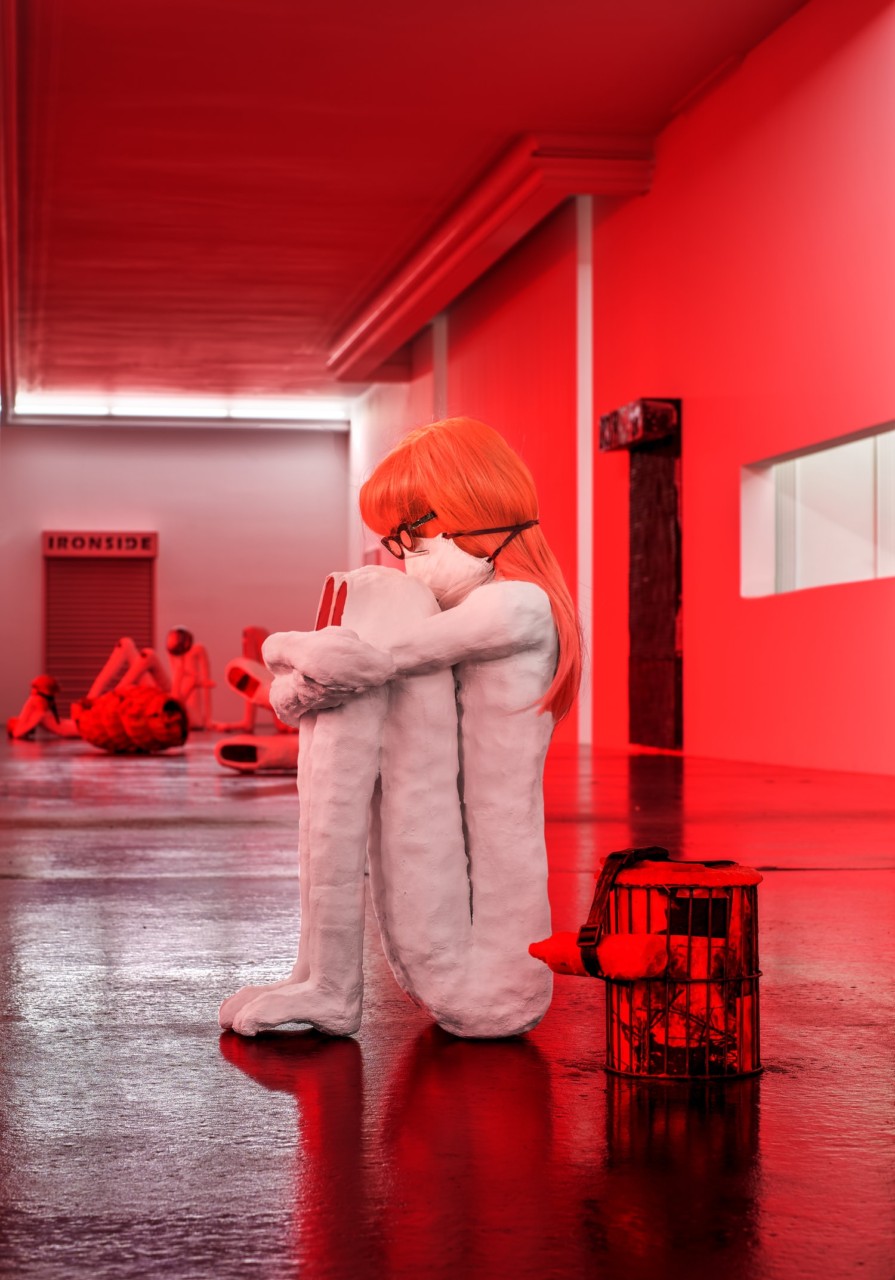


Rebecca Ackroyd, The Mulch (installation view) at Peres Projects, Berlin. Courtesy Peres Projects, Berlin. Photographer: Matthias Kolb
On viewing her exhibition at Peres Projects gallery last month, Rebecca Ackroyds work is still very much emblazoned in the memory. The gallery space was dominated. Red filters were put on the windows, turning any natural light into a beaming, fiery crimson. Stud walls were put up, dividing the space into one long oven-like room. Sitting on the floor within it were white figures made of chicken wire and bandages, fixedly basking the radiative light from the windows, in hunched reclining postures.
This new body of work made by Ackroyd, who completed her postgraduate degree at the RA in 2015, explores a fresh chapter of artistic exploration, incorporating the figurative and developing the use of discarded objects such as shells, plastic bottles and venetian blinds, through castings in various materials to create provocative suggestive spatial dialogues. Her Fine Art background has given her the advantage of being able create through a number of mediums – sculpture, photography and drawing – which all played subtle interventions within the Berlin exhibition.
Ackroyd deals with personal memories of home, while questioning what it means to be a British female in the 21st century. A second, smaller room at Peres Projects harked back to her exhibition at Outpost in Norwich last year where she fitted the room with a kitsch swirly carpet, like that found at any English pub (Ackroyd has worked at many). The repetitive floral design is described by the artist as a landscape of national identity, a symbol that brings to mind the enclosed, dim-lit spaces of a local pub and all the traditions that such places entail. This room solely invited the viewer to look down, at the carpet and a man-hole placed in the centre.
The term ‘man-hole’ is not to be overlooked and it acts on one hand an iron paving stone, capping the unknown darkness dwelling beneath, but on the other feeds into the politics of gender and division within the exhibition. The contrast between the masculine space with its man-hole and pub carpet, to the scorching redness of the front room with its reclining female nudes, starts to drum up a strong message.
On first contemplation her work occupies a boldly dark, introspective quality, yet anybody can appreciate and absorb the knack that this artist has for her effervescent use of materials and ability to transform a given space.
Rebecca Ackroyd is showing at a group exhibition, Mademoiselle, at the Centre Regional D’art Contemporain in France until 6 January 2019.